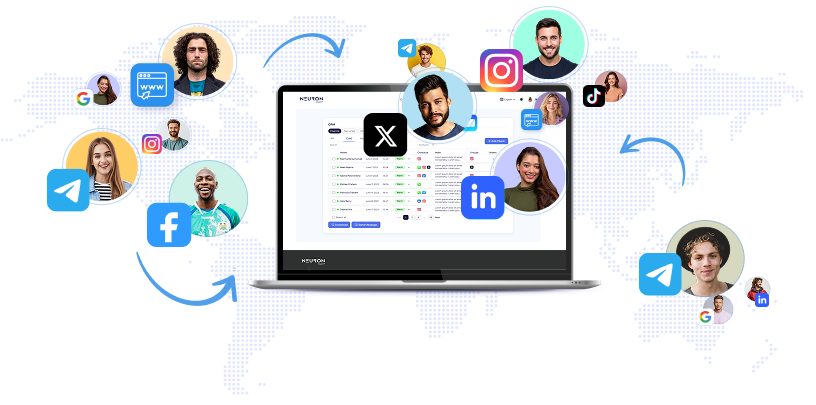
Cloud giants are heavily investing in generative AI and large language models, with a focus on their financial services clients who are primarily in the test-and-learn phase. The three leading cloud computing vendors, namely Amazon Web Services, Google, and Microsoft, have dedicated significant resources to the advancement of generative AI. Microsoft has made a $13 billion investment in OpenAI, the creator of the widely-used ChatGPT generative AI search engine. AWS has recently announced a $100 million investment in a generative AI innovation center, while Google is estimated to have invested around $300 million in AI startups. These cloud providers offer a range of proprietary technologies designed for developers, data scientists, and non-experts to create and implement generative AI and large language models. The potential of generative AI to transform various applications, industries, and businesses has captured the attention and imagination of industry leaders. Although generative AI has been around for some time, it has now reached a tipping point, according to Swami Sivasubramanian, AWS's VP of database, analytics, and machine learning. Financial institutions, which are major clients of these cloud vendors, are also recognizing the transformative potential of generative AI. While most banks are still in the early stages of exploration due to concerns about errors and hallucinations in this advanced form of AI, they are actively testing different use cases. These range from improving chatbots to summarizing documents. However, the growing popularity of generative AI has also sparked interest in more traditional forms of AI, such as the use of machine learning in anti-money laundering efforts. Financial services organizations are eager to avoid being left behind and are inquiring about generative AI in their conversations with cloud vendors. While some banks, such as Synchrony Financial and SouthState Bank, are allowing their employees to experiment with the enterprise versions of generative AI technologies like Microsoft/OpenAI's ChatGPT, many banks are approaching the adoption of generative AI cautiously. They believe in limiting access to the technology to individuals who understand its power and potential risks, to prevent any unintended consequences. Banks are rightly taking a slow and cautious approach to generative AI adoption, while technology vendors are heavily investing in it for their future growth, says Sumeet Chabria, CEO of ThoughtLinks. However, banks may face increasing pressure from consumers who become more accustomed to the technology as it becomes more widely integrated into various products.
Chabria emphasizes the need for banks and technology vendors to collaborate and discuss parity before it becomes too late. This includes vendors taking the time to fully comprehend the responsible banking concerns, including cybersecurity, and banks being willing to partner on low-risk use cases to further advance the technology and train their teams on its potential and risks. There are already use cases where generative AI could help mitigate risk in banking, such as predicting technology incidents, even if the probability of accuracy is low. In addition to generative AI, traditional AI methods like machine learning and natural language processing are extensively used in the banking industry for various purposes, including fraud detection, cybersecurity monitoring, customer engagement, onboarding, borrower assessment, and personalized offers. The scale brought by large language models such as GPT-4 or Titan allows for the analysis of massive amounts of data and documents, while generative AI enables the generation of text and code based on these extensive datasets. The top use cases for generative AI in banks, as identified by Bill Borden, Corporate VP of Financial Services Industry at Microsoft, are content creation, semantic search, and code generation. Content creation involves tasks like generating proposals, reports, presentations, and summarizing meetings and customer conversations. Semantic search aims to make searching smarter, faster, and continuously trained by utilizing natural language and context. Code generation, on the other hand, assists developers by reducing the time spent writing code, allowing them to focus on designing new statistical models and mathematical tools for actuarial challenges. Generative AI appeals to financial services clients as it has the potential to reduce operational costs and transform customer interactions, according to Yolande Piazza, VP of Financial Services at Google. The automation of manual control functions and the ability to be more predictive in reporting to regulators are among the opportunities seen in the industry. Google offers an enterprise version of Bard, a search engine similar to ChatGPT, which can be customized to focus on a bank's internal documents and data, with the option to include certain external documents like SEC filings. This level of control ensures data security and prevents IP leakage or the possibility of accessing competitors' information. The search results from Bard are auditable, as every source is listed, giving users the ability to validate the information. While the hype around generative AI is driving interest in traditional AI methods like machine learning among financial services clients, it is important to note that generative AI is not just a passing fad, according to John Kain, Head of Financial Services Market Development at AWS. The quality of output and the productivity benefits derived from language models are already evident, making it a tangible and significant advancement.
None


Cisco Systems Inc., a global leader in technology renowned for its networking hardware, software, and telecommunications equipment, has recently revised its sales forecast upward.

A San Diego defense tech firm, Shield AI, introduced an AI-piloted fighter jet called the X-BAT on Tuesday, capable of vertical takeoff and landing (VTOL) without runways, advancing the Pentagon's vision of autonomous drones operating combat missions alongside human pilots.

Charter's Spectrum Reach has reported notable success using Waymark’s AI-powered advertising creation platform, having produced over 15,000 ads since the partnership between the two companies began earlier this year.

South Korea is set to make a significant leap in artificial intelligence by planning to construct the world’s largest AI data center, boasting a power capacity of 3,000 megawatts—approximately three times the size of the current "Star Gate" data center.

Artificial intelligence (AI) is rapidly revolutionizing search engine optimization (SEO), bringing both considerable challenges and exciting opportunities for SEO professionals around the globe.

Lightricks, a trailblazer in digital content creation technology, has launched an innovative product called LTX Studio, set to transform video production through artificial intelligence.

C3.ai, a leading enterprise artificial intelligence software provider, has announced a major restructuring of its global sales and services organization to boost operational efficiency and better align resources with long-term growth goals.
Launch your AI-powered team to automate Marketing, Sales & Growth

and get clients on autopilot — from social media and search engines. No ads needed
Begin getting your first leads today